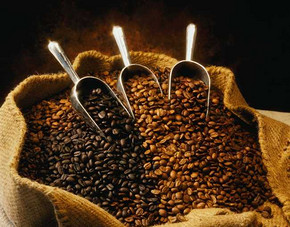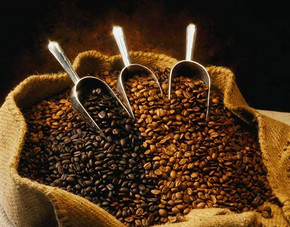A brief introduction to the Flavor of various Coffee varieties in Latin America
Follow the caf é (Wechat official account vdailycom) and found that Beautiful Cafe opened a small shop of its own.
Mexico Mexico
The most famous coffee beans in Mexico are mainly from Coatepec, Oaxaca and Chiapas/Tapachula. The acidity is lively, bright and mild, delicate flavor, medium consistency, is a very good choice for formula beans, deep baking performance is also good. In addition, Mexican coffee from some highland areas has a fuller consistency and stronger acidity, which is a bit close to the well-performing Guatemalan coffee beans.

Guatemala Guatemala
High altitude hard beans (SHB,Strictly Hard Bean), the best performance of Guatemalan coffee, have very strong acidity, floral and fruity aromas, medium to full consistency and high complexity, and are the best representative of simple style. The most famous producing area in Guatemala is Antigua, while other regions such as Huehuetenango and San Marcos also produce high-quality coffee beans.
Unlike many other coffee-producing countries, Guatemala is very committed to growing Arabica coffee trees of traditional old trees, and has a large number of excellent manor and cooperative coffee beans.
Honduras Honduras
Honduras is not a well-known coffee producer, but the best-performing Honduran coffee beans have a sweet, low-key, full consistency and excellent rich taste.
El Salvador El Salvador
Salvadoran coffee beans have mild acidity, delicate flavor and medium consistency. Its stability, sweetness and balance are very pleasing, and it is an excellent formula bean.
Nicaragua Nicaragua
The best Nicaraguan coffee beans generally come from Matagalpa, Jinotega and Segovia, with moderate acidity, plump and low-key, round and soup-like consistency, and rich in diversified fruit tonality.
Costa Rica Costa Rica
The best quality Costa Rican coffee beans are generally from the extremely hard bean (SHB) grade, its beans are large, clear flavor, bright and strong acidity, full consistency. Costa Rican coffee beans are mainly good at aftertaste and strong flavor, but they are not particularly outstanding in terms of complexity and variability. Costa Rica produces a lot of excellent manor coffee beans, including the famous La Minita Manor.
Panama Panama
Panama's boutique coffee beans are mainly concentrated in Boquete, near the Costa Rican border, which lies on the slopes of Mount Baru. Most Panamanian boutique coffee beans have a delicate, sweet and pleasing flavor, medium consistency, lively and delicate acidity, and some even have floral and fruity flavors. In addition, some of the stronger coffee beans have acidity as strong as red wine, and the best performers can even keep pace with Guatemalan and Costa Rican coffee beans.
Jamaica Jamaica
Authentic Jamaican Blue Mountain Coffee is grown at an altitude of more than 3000 feet above sea level in the Blue Mountains. It is full of consistency, moderate acidity, high complexity and a sense of balance. But sometimes it may destroy all the previous advantages with a faint musty smell.
In addition, there are a small number of Jamaican coffee beans grown at low elevations, which can be slightly identified by their names, such as Blue Mountain Valley Coffee, Jamaican Alpine Coffee and so on.
Haiti Haiti
The typical flavor of Haitian coffee beans treated with water is sweet, soft and medium consistency, but it is often slightly moldy or overfermented due to mistakes in the treatment and drying process.
Columbia Colombia
In the Colombian coffee bean grading system, Supremo is the highest marketing grade, while Excelso is the smaller, more common grade. These large Colombian coffee beans have a balanced, acidity, unique flavor and relatively full consistency, sometimes with a hint of red wine or an admirable fruit flavor.
Brazil Brazil
The best performers of Brazilian coffee, with mild, sweet, medium consistency and relatively soft acidity, have made Brazilian Arabica beans popular with lovers of Italian concentrated and deep-roasted coffee beans.
There are three main ways to treat Brazilian manor coffee beans:
1. Washing treatment
2. Drying / natural treatment
3. Natural fermentation of mucous membrane.
Typically, washed coffee beans have the brightest, clearest taste and the most unique acidity of all Brazilian coffee beans, while medium-and upper-quality dried Brazilian coffee beans have fuller consistency and higher complexity, but lower acidity. The flavor of Brazilian coffee made by natural fermentation of mucous membrane is between the first two: the flavor is clear and fruity, the balance is good, and the acidity is delicate and rich.
Important Notice :
前街咖啡 FrontStreet Coffee has moved to new addredd:
FrontStreet Coffee Address: 315,Donghua East Road,GuangZhou
Tel:020 38364473
- Prev

Latin American coffee history, Latin American coffee aroma, brightness and taste
Following Cafe (official Wechat account vdailycom) found that Beautiful Caf é opened a small shop of its own. In the 17th century, the cultivation and production of coffee was monopolized by Arabs. It was valuable in Europe, and only senior European people could drink coffee. Until 1690, a Dutch captain sailed to Yemen, got some coffee seedlings, and began in Dutch India (present-day Indonesia).
- Next

Price of Bali coffee, introduction of Bali coffee varieties
Following caf é comments (Wechat official account vdailycom) found that Beautiful Cafe opened a small shop of its own for a trip to Bali, in addition to the wonderful scenery, unique culture, delicious seafood snacks, as well as local coffee, the coffee produced in Bali is famous for its strong and unique taste. 1. Golden Rabbit Golden Coffee Golden Rabbit Golden Coffee in Bali is produced by two varieties of coffee.
Related
- Detailed explanation of Jadeite planting Land in Panamanian Jadeite Manor introduction to the grading system of Jadeite competitive bidding, Red bid, Green bid and Rose Summer
- Story of Coffee planting in Brenka region of Costa Rica Stonehenge Manor anaerobic heavy honey treatment of flavor mouth
- What's on the barrel of Blue Mountain Coffee beans?
- Can American coffee also pull flowers? How to use hot American style to pull out a good-looking pattern?
- Can you make a cold extract with coffee beans? What is the right proportion for cold-extracted coffee formula?
- Indonesian PWN Gold Mandrine Coffee Origin Features Flavor How to Chong? Mandolin coffee is American.
- A brief introduction to the flavor characteristics of Brazilian yellow bourbon coffee beans
- What is the effect of different water quality on the flavor of cold-extracted coffee? What kind of water is best for brewing coffee?
- Why do you think of Rose Summer whenever you mention Panamanian coffee?
- Introduction to the characteristics of authentic blue mountain coffee bean producing areas? What is the CIB Coffee Authority in Jamaica?

